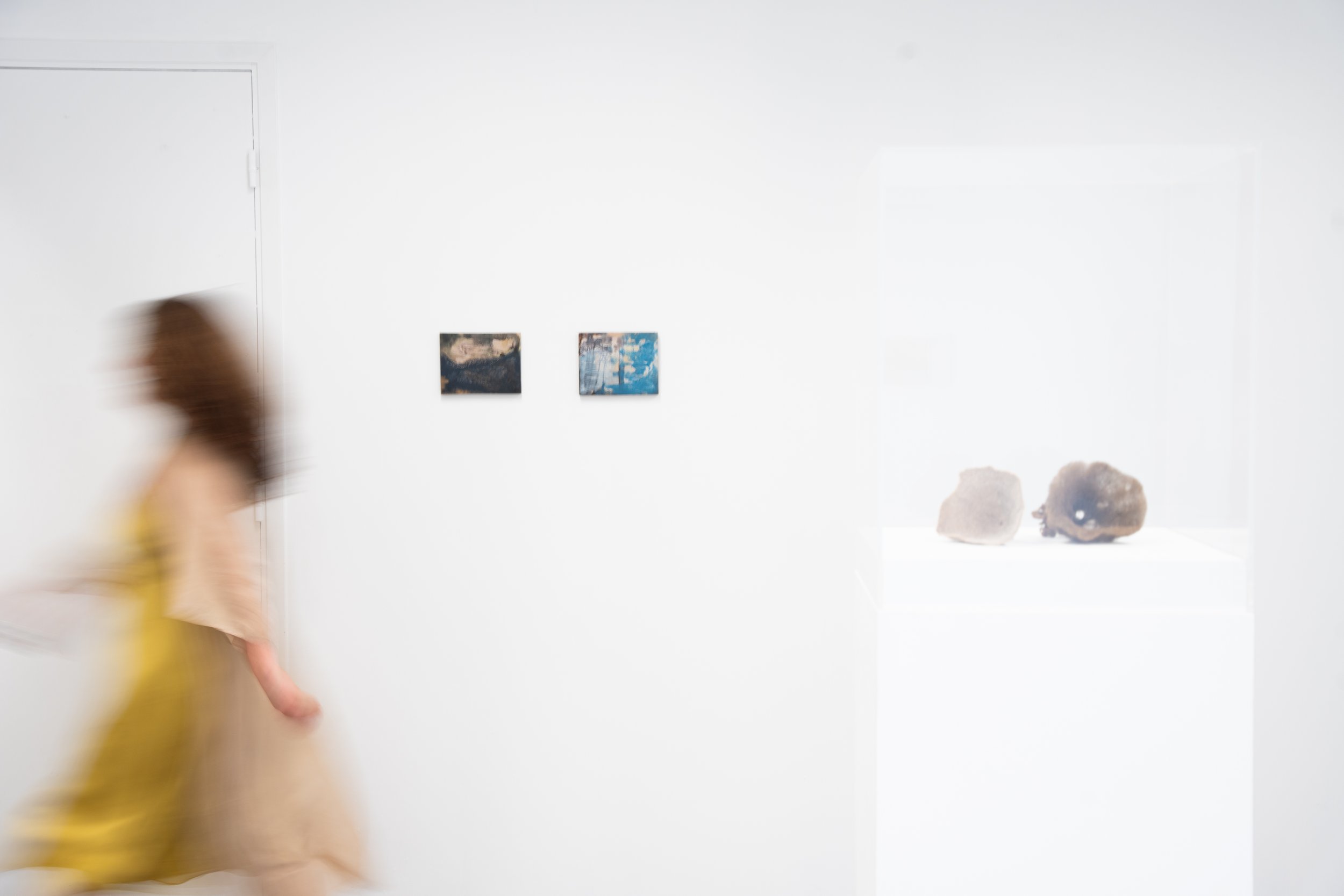Porous
NICE 2025: POROUS — Organised by TBA21–Academy and Villa Arson
Sea Bones A series of paintings made from limestone, sediment, and crushed shells locally sourced from the coastline region—evoking the once-flourishing port’s wetland that covered the region for over 300 years. The materials and forms in oil paint evoke environmental processes that shape landscapes in transition, with edges and seascapes in motion.
NICE 2025: POROUS — Ports as Interspecies Dwelling, Biennale des Arts et de l’Océan 2025 at Villa Arson, Nice, France
June 7–9, 2025
Curated by María Montero Sierra, and organised by TBA21–Academy and Villa Arson, with support from the European Commission’s S+T+ARTS4Water II initiative.
Siobhan McDonald | World Ocean Day, the UN Conference on the Oceans & the Biennale des Arts et de l’Océan 2025. Organized by TBA21–Academy with the support of the European Commission Initiative S+T+ARTS4Water II. McDonald’s exhibition brings together new works in film, painting, sculpture and installation, tracing different temporal and material states of water.
The heart of the presentation unfolds around a shipwreck, filmed while submerged beneath the sea. The film traces Dublin Port’s layered identities through cultural, historical, and anthropological lenses. Depicting streams, rivers and oceans as planetary networks, it navigates submerged landscapes, and the shifting boundaries of coastal erosion—ultimately posing questions about our relationship to water, memory, and the future. The image of the sea appears as a metaphor, ever moving and changing its form, relentless and elusive but also timeless and constant.
This haunting journey from wetland to shoreline — navigates a two hundred year slice of underwater time through a fluid and multifaceted lens, spanning scientific, cultural, and historical perspectives. The film Floating Body captures a vivid revelation of a shipwreck to reveal precarious balance at a pivotal moment in rising sea levels. It lies just outside the formal boundaries of Dublin Port, on Pormarnock—a 19th-century fishing vessel buried beneath the sand for over 200 years.
Read more here:👉 Interalia Magazine
Floating Body
The film traces Dublin Port’s layered identities through cultural, historical, and anthropological lenses. Depicting streams, rivers and oceans as planetary networks, it navigates submerged landscapes, shipwrecks, and the shifting boundaries of coastal erosion—ultimately posing questions about our relationship to water, memory, and the future. The image of the sea appears as a metaphor, ever moving and changing its form, relentless and elusive but also timeless and constant.
Each artwork is 20 × 15 cm and 24 × 18 cm | Dimensions for the installation are variable
A series of paintings made from limestone, sediment and crushed shells locally sourced from the coastline region – evoking the once-flourishing port’s wetland that covered the region for over 300 years.
Sea Bones
Materials and forms in oil paint are evocative of environmental processes that shape landscapes in transition, with edges and seascapes in motion. These places exist in endless flux, attuned to tidal rhythms – dissolving salt marshes into a series of indeterminate hydrological visions of space, time, and existence.
Can ports—once gateways of exchange—be reimagined as porous spaces of interspecies cohabitation?
Siobhan McDonald invited to speak at the opening event of the UN Nations Conference and screen the film to an audience of policymakers and mayors from global port cities. The session will be chaired by Édouard Philippe, President of the World Mayors Network.
This second edition of S+T+ARTS4Water, titled Ports in Transformation, is made possible through a consortium of cultural and scientific partners including TBA21–Academy, WAAG, Gluon, PINA, and more. As a central actor in the project, they continue a commitment to oceanic research and advocacy through new residencies and collaborations in Ocean Space (Venice) and online via Ocean-Archive.org.
Shapeshifter is a project that explores Dublin Port as a gateway of exchange—reimagined as a porous space of interspecies cohabitation. The central theme unfolds around Dublin’s history as a wetland and the mythologies it holds as well as its future. Water assumes a central role in its metaphorical dimension, but also as a carrier of measurable data.
With thanks to filmmaker: José Miguel Jiménez; Dublin Port company and The National Monument Service, Government of Ireland.








